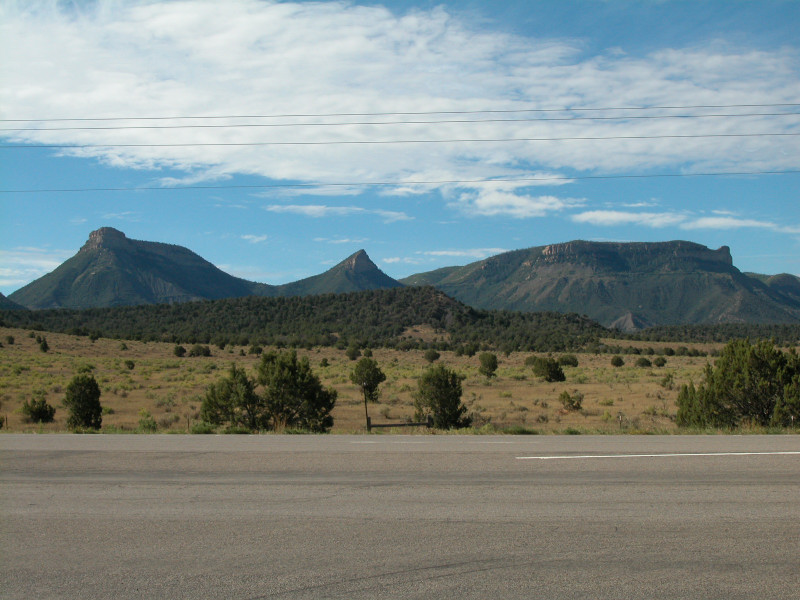One of the eight roofless kivas of the Spruce Tree House
Dany entering a kiva reconstructed by the National Park Service
Another cliff-dwelling village...
Cliff Palace, Mesa Verde's largest cliff dwellings.
home of Mesa Verde cliff-dwelling houses.
The low wall in front sets the area apart from the refuse dump. The large three-story wall front about 20 rooms : probably one or two people lived in each of these rooms, primarily used as bedrooms or as work areas in bad weather.
On favorable days, the families lived and worked in the courtyards, on the rooftops and on the balconies extended from the front of the building.
A kiva is a religious structure, a ceremonial chamber. Men and women formed special societies to care for the spiritual needs of the village : they gathered in the kivas to perform religious ceremonies. When no ceremonies were taking place, the kiva was used as a work area.
The large pit on the ground was a fireplace. Fresh air was drawn in through the ventilator shaft, hit the deflector wall between the ventilator outlet and the firepit and circulated evenly through the kiva. Beyond the firepit is a small hole, called a sipapu : it represents the opening through which man emerged onto the face of the earth. As for the niches (small openings in the walls of the kivas), they held special ceremonial objects such as turquoise, shell beads and prayer sticks. The pilasters supported the beams of the roof.
Women knelt with their heels against the back wall and used the mano, a handstone, to grind corn, nuts, berries and roots on the metate, a large flat stone.
... on our way to Cliff Palace.
The tan cliffs are composed of sandstone, a porous rock which allows the rain, snow and running wtaer to slowly seep down through it. Beneath the sandstone is a layer of shale through which the moisture cannot penetrate, so water reaches the shale, flows between the two layers and emerges in the form of a seep or spring. In the wintertime when the moisture freezes, it cracks and loosens the sandstone causing pieces to break away. This gradual process of cracking and collapse produces the overhangs where you see the cliff dwellings today.
The Anasazi living here were fortunate to have this spring so close to their dwelling.
This is not a path the Anasazi would have used. These people climbed up and down the dirt slopes, going around or over the large boulders. At the steep cliff face they carved small notches into the sandstone which were just deep enough to hold the front part of a hand or a foot : using such hand and toe hold trails, they climbed up and down from the alcoves to the mesa tops throughout the year.
seen from Sun Point View.
12-foot long tunnel through wich we had to crawl to leave the site.
seen from Sun Point View.
seen from Sun Point View.
Dany entering one of the room by a rectangular doorway.























